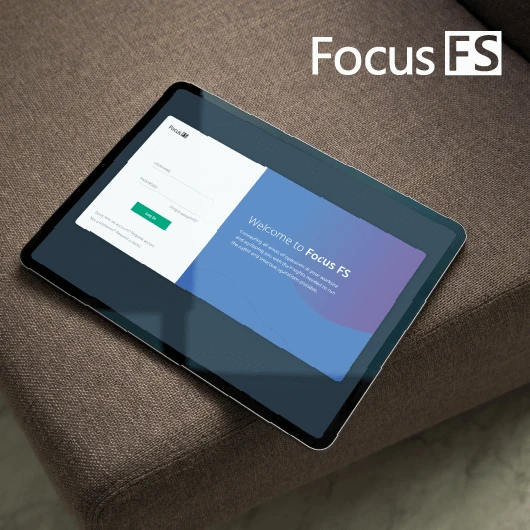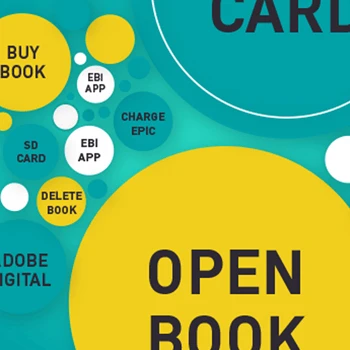What exactly is design thinking and why do we need a workshop?
Design thinking is a human-centered problem-solving methodology that emphasizes empathy, collaboration, and experimentation. Workshops provide structured environments where teams learn to understand user needs, generate creative solutions, and test ideas quickly. Unlike traditional problem-solving approaches that start with technology or business constraints, design thinking starts with understanding human experiences and needs.
Tip: Choose workshops that focus on real business challenges rather than theoretical exercises to maximize immediate value.
How does design thinking connect to Akendi's Experience Thinking framework?
Experience Thinking and design thinking share core principles of human-centered design and holistic problem-solving. Both approaches emphasize understanding the complete user journey across brand, content, product, and service experiences. Design thinking workshops help teams apply this connected thinking to specific challenges, ensuring solutions consider all touchpoints rather than isolated interactions.
Tip: Look for workshops that address how design thinking applies across your entire experience ecosystem, not just individual products.
What makes design thinking different from other problem-solving methods?
Design thinking prioritizes empathy and user understanding before jumping to solutions. It uses iterative cycles of research, ideation, prototyping, and testing rather than linear problem-solving. The approach encourages 'fail fast' mentality where teams learn through experimentation rather than lengthy analysis. This human-centered approach often reveals unexpected insights and solutions that traditional methods miss.
Tip: Prepare your team for the discomfort of exploration mode - design thinking can feel messy before clarity emerges.
Who should attend design thinking workshops in our organization?
Design thinking works best with diverse, cross-functional teams including users, designers, developers, and business stakeholders. Include people who understand customer needs, those who build solutions, and decision-makers who can act on insights. Mix experience levels - junior members often bring fresh perspectives while senior members provide context and authority to implement changes.
Tip: Invite influential participants who can champion design thinking approaches within your organization after the workshop.
What business problems are best suited for design thinking workshops?
Design thinking excels with complex, ambiguous problems where user needs are unclear or solutions require innovation. It works well for improving customer experiences, developing new products or services, and addressing systemic organizational challenges. Problems that benefit most are those where traditional approaches have failed or where multiple stakeholders have different perspectives on the solution.
Tip: Choose problems that are important enough to warrant follow-up action but not so critical that failure would be catastrophic.
How do design thinking workshops create lasting organizational change?
Effective workshops don't just teach methods - they shift mindsets toward user-centered thinking. Participants experience firsthand how empathy and experimentation lead to better solutions than assumptions and debates. The collaborative nature builds cross-functional relationships and shared understanding that persists beyond the workshop. Real change happens when teams apply design thinking principles to ongoing work.
Tip: Plan specific follow-up projects where participants can immediately apply design thinking methods to reinforce learning.
What's the difference between design thinking and design sprints?
Design thinking is a broad methodology while design sprints are specific time-boxed applications of design thinking principles. Sprints typically focus on testing new ideas through rapid prototyping and validation, usually over 4-5 days. Design thinking workshops may use sprint techniques but also cover broader mindset shifts and various problem-solving approaches. Both emphasize learning through doing rather than lengthy planning.
Tip: Start with broader design thinking workshops to build mindset and skills, then use sprints for specific product challenges.
How does design thinking address the ethics of design decisions?
Design thinking's emphasis on empathy naturally leads to considering broader impacts of design decisions. By deeply understanding user needs and contexts, teams become more aware of potential harm their solutions might cause. The methodology encourages considering diverse perspectives and unintended consequences. However, ethical design requires intentional effort beyond just following design thinking processes.
Tip: Include discussions about potential negative impacts and 'do no harm' principles as part of your design thinking practice.
What does a typical design thinking workshop structure look like?
Most workshops follow the classic design thinking process: Empathize (understand users), Define (frame problems), Ideate (generate solutions), Prototype (build to think), and Test (learn from users). Sessions typically include individual reflection, small group activities, and full group discussions. Expect hands-on activities like user journey mapping, brainstorming, sketching, and rapid prototyping using simple materials.
Tip: Look for workshops that balance structured activities with flexibility to explore unexpected insights that emerge during the process.
How long should design thinking workshops be for maximum effectiveness?
Workshop length depends on problem complexity and participant availability. Half-day workshops work for introducing concepts or tackling focused challenges. Full-day sessions allow deeper exploration and prototype development. Multi-day workshops enable teams to complete full design thinking cycles with user research and testing. Longer workshops generally produce more actionable results but require greater commitment.
Tip: Start with shorter workshops to build buy-in, then invest in longer intensive sessions for complex challenges that matter most to your business.
What materials and space requirements are needed for effective workshops?
Design thinking workshops require flexible spaces that support collaboration, wall space for posting ideas, and breakout areas for small groups. Materials include sticky notes, markers, flip chart paper, and basic prototyping supplies like cardboard and tape. Digital collaboration tools work for virtual workshops but in-person sessions often generate more creative energy through physical interaction with materials.
Tip: Test all technology and collaboration tools beforehand to ensure smooth execution - technical difficulties can derail workshop momentum.
How do you facilitate design thinking workshops for hybrid or remote teams?
Virtual design thinking requires adapting physical activities to digital tools while maintaining collaborative energy. Use digital whiteboards for brainstorming, breakout rooms for small group work, and screen sharing for presentations. Successful virtual workshops often have shorter time blocks with more frequent breaks. The key is creating shared virtual spaces where participants feel equally engaged regardless of location.
Tip: Assign virtual participants to lead certain activities to ensure they remain actively engaged rather than passive observers.
What role does the facilitator play in design thinking workshops?
Facilitators guide the process while letting participants do the thinking. They keep discussions focused on objectives, manage time, and ensure everyone contributes. Good facilitators ask probing questions, help teams work through conflicts, and know when to let conversations flow versus when to redirect. They create safe spaces for creative risk-taking and help teams synthesize insights into actionable next steps.
Tip: Choose facilitators who have real experience applying design thinking to business challenges, not just training in workshop methods.
How do you handle different personality types and participation levels?
Effective workshops use varied activities that suit different working styles - individual reflection for introverts, group brainstorming for extroverts, visual exercises for visual thinkers, and hands-on building for kinesthetic learners. Facilitators can pair junior members with executives, use chat functions for those who prefer written input, and create smaller groups where quieter voices can be heard.
Tip: Build in both individual thinking time and group sharing to ensure all personality types can contribute their best thinking.
What happens when workshops don't produce clear solutions?
Not all design thinking workshops end with definitive answers - sometimes the most valuable outcome is better understanding of the problem. Workshops might reveal that you're solving the wrong problem, uncover constraints you hadn't considered, or identify need for additional user research. These insights are valuable even if they don't produce immediate solutions.
Tip: Set expectations that workshops are about learning and insight generation rather than guaranteed solution delivery - this reduces pressure and increases genuine exploration.
How do you maintain energy and engagement throughout longer workshops?
Workshop energy comes from variety in activities, clear progress markers, and meaningful challenges. Alternate between individual work, small groups, and full group activities. Include physical movement, creative challenges, and moments of discovery. Show how each activity builds toward the final outcome so participants understand why they're doing specific exercises rather than feeling like they're just playing games.
Tip: Plan for energy dips and have backup activities ready - sometimes the best insights come from unexpected tangents when teams feel comfortable exploring.
How should we prepare participants before the workshop?
Provide workshop goals and context 24 hours in advance so participants can mentally prepare for productive discussions. Share the business challenge you'll be tackling and any relevant background information. Set expectations about the collaborative nature of design thinking and that exploration can feel uncomfortable before clarity emerges. Brief participants on the 'yes, and' mentality that builds on ideas rather than shooting them down.
Tip: Ask participants to bring specific examples of user feedback or customer challenges they've encountered - real stories make workshop discussions more concrete and actionable.
What mindset shifts should participants expect during design thinking workshops?
Participants often need to shift from 'knowing the answer' to 'exploring possibilities,' from individual expertise to collaborative problem-solving, and from avoiding failure to learning through experimentation. The process requires suspending judgment during ideation and embracing ambiguity during problem definition. Some participants may find the non-linear approach frustrating if they're used to structured, analytical methods.
Tip: Acknowledge upfront that design thinking can feel messy and uncomfortable - this permission to struggle helps participants push through the discomfort to reach insights.
How do we select the right mix of participants for our workshop?
Gather diverse perspectives including customer-facing roles, technical implementers, and business decision-makers. Include people who know your users well and those who will be responsible for implementing solutions. Avoid teams where one person dominates discussions or where hierarchies prevent honest feedback. Fresh perspectives from outside the usual project team can stimulate critical thinking and valuable questions.
Tip: Use a participant selection framework that ensures you have representation from different functions, experience levels, and perspectives on the problem you're addressing.
What should participants know about user-centered design before attending?
Participants don't need deep UX knowledge but should understand that user needs drive design decisions, not internal preferences or assumptions. Brief them on the difference between what users say they want and what they actually need through their behavior. Explain that design thinking focuses on understanding the 'why' behind user actions before jumping to solutions.
Tip: Share one or two compelling examples of how user research revealed surprising insights that changed product direction - this helps participants appreciate the value of the empathy phase.
How do we prepare stakeholders who are skeptical of design thinking?
Address skepticism by connecting design thinking to business outcomes they care about: reduced development waste, faster time-to-market, and higher customer satisfaction. Share case studies from similar organizations that achieved measurable results. Acknowledge that design thinking isn't magic - it's a structured way to reduce risk by understanding problems before building solutions.
Tip: Invite skeptical stakeholders to observe part of a workshop rather than requiring full participation - seeing the process in action often converts skeptics better than explanations.
What pre-work or research should teams complete before workshops?
Gather existing user feedback, customer support data, and any previous research about the problem you're addressing. Document assumptions your team currently holds about users and solutions. If possible, conduct brief user interviews or observations before the workshop. Having some baseline understanding helps teams make better use of workshop time for synthesis and ideation rather than basic research.
Tip: Don't over-prepare - part of design thinking's value comes from fresh perspective and collaborative discovery, so balance preparation with openness to new insights.
How do we set realistic expectations for workshop outcomes?
Frame workshops as the beginning of the design process, not the end. Explain that outputs might include better problem definition, user insights, preliminary concepts, or prototypes ready for testing - not finished solutions. Set expectations that the most valuable outcome might be discovering you were solving the wrong problem or need additional research before proceeding.
Tip: Define success metrics before the workshop that focus on learning and insight generation rather than solution completion - this reduces pressure and increases honest exploration.
How do we apply Experience Thinking principles in design thinking workshops?
Experience Thinking's four connected areas - brand, content, product, and service - provide a framework for comprehensive problem exploration. During empathy phases, examine how users experience your brand promise, content consumption, product interactions, and service delivery. Use this framework to ensure solutions address the complete user journey rather than isolated touchpoints. Each area informs and strengthens the others in connected experiences.
Tip: Map your current problem across all four Experience Thinking areas to identify gaps you might miss with a narrower focus.
What's the best way to conduct user empathy research during workshops?
Use multiple empathy-building techniques: review existing user feedback, create detailed user personas based on real research, map current user journeys including pain points and emotions, and role-play user scenarios. If possible, include actual users as workshop participants or conduct quick user interviews during breaks. The goal is building genuine understanding of user needs, not validating predetermined solutions.
Tip: Focus empathy activities on user behavior and context rather than just preferences - understanding why users act certain ways reveals better design opportunities.
How do we generate truly innovative ideas during brainstorming sessions?
Start with 'How might we...' questions that frame challenges as opportunities. Use techniques like worst possible idea (to break mental barriers), building on others' ideas with 'yes, and...', and setting quantity goals that push beyond obvious solutions. Include diverse perspectives and encourage wild ideas that can be refined later. The key is suspending judgment during ideation and saving evaluation for later phases.
Tip: Set a rule that the first 10 ideas in any brainstorming session are likely obvious ones - push your team to generate 20-30 ideas to reach more creative territory.
What prototyping methods work best in workshop settings?
Use rapid, low-fidelity prototyping that focuses on core concepts rather than polished details. Paper sketches, storyboards, role-playing scenarios, and simple cardboard models help teams think through ideas quickly. Digital wireframes work for interface concepts but avoid getting caught up in visual design details. The goal is making ideas tangible enough to discuss and test, not creating production-ready solutions.
Tip: Give teams strict time limits for prototyping - this prevents perfectionism and keeps focus on core concepts rather than superficial details.
How do we test and validate ideas generated in workshops?
Plan quick validation methods like guerrilla user testing, stakeholder feedback sessions, or concept validation surveys. Test core assumptions underlying your ideas rather than perfect execution. Use the '5 Whys' technique to dig deeper into user feedback and understand root causes. Remember that workshop prototypes are meant to learn, not to impress - failed tests provide valuable insights for iteration.
Tip: Design tests that can definitively prove your idea wrong rather than seeking confirmation - this leads to more honest learning and better solutions.
What role does storytelling play in design thinking workshops?
Storytelling helps teams communicate user needs, share insights, and present solutions in compelling ways. User journey stories make abstract data personal and memorable. Solution stories help stakeholders understand how ideas would work in practice. Visual storytelling through storyboards or journey maps makes complex experiences easier to understand and improve.
Tip: Encourage teams to tell stories from the user's perspective rather than the organization's perspective - this keeps focus on user value rather than internal benefits.
How do we synthesize insights from complex workshop activities?
Use affinity diagramming to group related insights, identify patterns across different user feedback, and prioritize findings based on frequency and impact. Create clear summary statements that capture key insights without losing important nuances. Visual tools like charts or whiteboards help organize ideas for easy reference and decision-making.
Tip: Assign specific people to capture key insights throughout the workshop rather than trying to synthesize everything at the end - this prevents information loss and overwhelm.
What frameworks help evaluate and prioritize ideas from workshops?
Use impact/effort matrices to identify high-value, achievable ideas. Consider user value, business benefit, and implementation feasibility. The 'dot voting' method helps teams quickly identify ideas with broad support. ICE scoring (Impact, Confidence, Ease) provides more nuanced evaluation. Remember that the best workshop ideas might not be the most innovative - they're the ones that best address user needs within your constraints.
Tip: Include implementation stakeholders in idea evaluation to ensure selected concepts are realistic given your technical and resource constraints.
How do we build ongoing design thinking capability after initial workshops?
Create internal design thinking champions who can facilitate future sessions and coach teams in applying methods to daily work. Establish regular practice through monthly design challenges or 'design thinking office hours' where teams can get help applying methods to current projects. Document your organization's design thinking playbook with templates and processes adapted to your specific context.
Tip: Start a internal community of practice where workshop participants can share experiences, challenges, and successes applying design thinking to their work.
What resistance should we expect when introducing design thinking?
Common resistance includes concerns about time investment, skepticism about 'touchy-feely' approaches, and preference for data-driven decisions over user empathy. Some team members may feel threatened if design thinking challenges their expertise or changes their role in decision-making. Technical teams might question the value of 'soft' methods compared to engineering approaches.
Tip: Address resistance by demonstrating how design thinking actually leads to better data and more informed technical decisions rather than replacing analytical thinking.
How do we measure the success of design thinking workshops?
Measure both immediate outputs (insights generated, ideas created, prototypes built) and longer-term outcomes (solutions implemented, user satisfaction improvements, reduced development iterations). Track behavioral changes like increased user research, more collaborative problem-solving, and faster identification of poor ideas before significant investment.
Tip: Establish baseline metrics before workshops so you can demonstrate improvement in areas like time-to-market, user satisfaction scores, and internal collaboration quality.
What leadership support is needed for design thinking to succeed?
Leaders need to model design thinking behaviors: asking about user needs before proposing solutions, encouraging experimentation over perfectionism, and supporting teams through the discomfort of exploration. They must provide time and resources for user research and prototyping, and resist the urge to jump to solutions based on their own assumptions.
Tip: Have leaders participate in workshops as contributors rather than just observers - experiencing the process firsthand builds understanding and support for the methodology.
How do we integrate design thinking with our existing product development process?
Most organizations need to adapt design thinking to fit their current workflows rather than replacing everything. Use design thinking for problem definition and concept development phases, then connect outputs to existing development processes. The key is ensuring user insights from design thinking inform technical decisions throughout development, not just at the beginning.
Tip: Start by adding design thinking practices to existing project checkpoints rather than creating separate processes - this increases adoption and reduces disruption.
What budget considerations should we plan for ongoing design thinking practice?
Budget for initial workshop facilitation, ongoing training for internal champions, user research tools and activities, and time investment for prototype development and testing. Consider costs of space, materials, and technology tools that support collaborative work. The investment typically pays back through reduced development waste and improved user satisfaction.
Tip: Frame design thinking investment as risk reduction rather than additional cost - preventing one failed product launch often covers years of design thinking investment.
How do we scale design thinking across multiple teams and projects?
Create standard templates, processes, and toolkits that teams can adapt to their specific challenges. Train multiple internal facilitators rather than relying on external consultants. Establish design thinking as a default approach for certain types of problems rather than an optional add-on. Share success stories and learnings across teams to build momentum and best practices.
Tip: Focus on scaling the mindset and principles rather than rigid processes - different teams may need different applications of design thinking methods.
What role should design thinking play in our innovation strategy?
Design thinking works best as one component of a broader innovation strategy, not the entire strategy. It excels at identifying user-centered opportunities and reducing risk in early concept development. Combine design thinking with other innovation methods like business model innovation, technical innovation, and strategic foresight to create balanced innovation capability.
Tip: Use design thinking to validate that your innovations actually address real user needs rather than just demonstrating technical capability or business model creativity.
How do we choose between in-house facilitation and external facilitators?
External facilitators bring objectivity, deep methodology expertise, and ability to challenge internal assumptions. They're ideal for high-stakes workshops, initial training, or when internal politics might interfere. Internal facilitators understand your business context, culture, and constraints better. They're more cost-effective for ongoing practice and can provide continuity across multiple workshops.
Tip: Start with external facilitators for training and high-importance workshops, then develop internal capability for routine application of design thinking methods.
What common mistakes should we avoid in our first design thinking workshop?
Common mistakes include rushing through empathy to get to solutions, allowing senior stakeholders to dominate discussions, focusing on features rather than user needs, and expecting polished solutions from first workshops. Other pitfalls include inadequate time for synthesis, choosing problems that are too broad or too narrow, and failing to plan for post-workshop follow-up.
Tip: Plan for workshops to raise more questions than they answer - this indicates good exploration rather than superficial problem-solving.
How do we handle conflicting stakeholder priorities during workshops?
Use user needs as the tiebreaker when stakeholders disagree about priorities or solutions. Document different perspectives rather than forcing false consensus, and focus on areas of agreement before tackling divisive issues. Sometimes conflicting priorities indicate you're trying to solve multiple problems simultaneously and need to narrow focus.
Tip: Establish ground rules at workshop start that user value takes priority over internal politics or personal preferences when evaluating ideas.
What do we do with workshop insights that challenge current business strategy?
Document strategic challenges that emerge from user research and present them as opportunities for leadership consideration rather than problems to solve in workshops. Sometimes the most valuable workshop outcome is discovering misalignment between user needs and business strategy. These insights inform strategic planning rather than immediate tactical changes.
Tip: Frame strategic challenges as 'what would have to be true' questions rather than direct confrontations with current strategy - this makes insights easier to consider objectively.
How do we maintain momentum between workshop sessions?
Assign specific owners for follow-up actions, schedule regular check-ins to review progress, and create shared workspaces where teams can continue collaboration. Set clear expectations about interim work between sessions and provide lightweight tools teams can use independently. Consider shorter, more frequent sessions rather than single large workshops for complex problems.
Tip: Plan follow-up sessions during initial workshops while energy and commitment are high rather than trying to schedule them afterward.
What deliverables should we expect from design thinking workshops?
Expect documented user insights, defined problem statements, generated ideas with preliminary evaluation, and simple prototypes or concepts ready for further development. Deliverables might include user journey maps, persona updates, prioritized opportunity areas, and next steps for validation or implementation. Format deliverables for easy sharing and reference by stakeholders who didn't attend.
Tip: Focus on actionable deliverables that teams can immediately use for next steps rather than comprehensive documentation that sits unused.
How do we adapt design thinking for technical or B2B challenges?
Design thinking works well for technical challenges by focusing on end-user needs rather than technical specifications. In B2B contexts, consider multiple user types (buyers, administrators, end users) and organizational constraints. Use business case development alongside user empathy to address both human needs and business requirements.
Tip: Include technical stakeholders in empathy activities so they understand user context for technical decisions rather than just receiving requirements secondhand.
What follow-up activities maximize workshop value?
Plan user testing of workshop prototypes, deeper research into insights that emerged, and development of concepts that showed promise. Create implementation roadmaps that connect workshop outputs to business planning cycles. Establish regular reviews to assess progress and adapt approaches based on learning from implementation attempts.
Tip: Schedule follow-up activities during workshops while participants are committed rather than hoping to coordinate busy schedules afterward.
What's the first step to implementing design thinking in our organization?
Start by identifying a specific, manageable challenge that would benefit from user-centered problem-solving. Choose a problem that's important but not critical to business success, allowing room for experimentation and learning. Gather a small, diverse team of willing participants and plan a focused workshop to address this challenge using design thinking methods.
Tip: Begin with a problem that has visible user impact so workshop results can demonstrate clear value to stakeholders who weren't involved.
How do we choose our first design thinking workshop topic?
Select challenges where user needs are unclear, multiple solutions are possible, and stakeholders have different perspectives on the problem. Good first topics include improving existing user experiences, exploring new product opportunities, or addressing customer complaints that haven't been resolved through traditional approaches. Avoid problems with predetermined solutions or tight deadlines.
Tip: Choose problems that affect users you can easily access for research and testing - this makes the workshop more concrete and actionable.
What resources do we need to begin our design thinking journey?
Essential resources include dedicated time for workshop participants, flexible meeting spaces, basic collaboration materials, and access to users for research and testing. Budget for external facilitation if you lack internal expertise, and plan for follow-up activities to implement workshop insights. Most importantly, secure leadership support for experimentation and potential changes to current processes.
Tip: Start with what you have rather than waiting for perfect conditions - many effective design thinking activities require only sticky notes, markers, and willingness to try new approaches.
How do we build internal excitement for design thinking?
Share compelling stories about how design thinking solved problems similar to yours, invite external speakers to describe their experiences, and let people experience design thinking methods through small exercises. Focus on outcomes and value rather than process details. Create opportunities for curious team members to attend workshops or training as pilot participants.
Tip: Let enthusiastic early adopters share their experiences rather than trying to convince skeptics directly - peer advocacy is often more effective than management mandate.
What timeline should we expect for seeing results from design thinking?
Initial workshops provide immediate insights and ideas, usually within days or weeks. Implementing and testing concepts takes months, depending on complexity. Organizational behavior changes happen over 6-12 months as teams practice new methods and build confidence. Significant business impact typically requires 12-18 months of consistent application across multiple projects.
Tip: Plan for quick wins that demonstrate value early while building capability for longer-term, more significant applications of design thinking methods.
How do we evaluate potential design thinking workshop facilitators?
Look for facilitators who combine methodology expertise with business understanding and experience working with organizations similar to yours. Ask about their approach to handling resistance, managing group dynamics, and connecting workshop outputs to business implementation. Request references from previous clients and examples of successful workshop outcomes.
Tip: Choose facilitators who ask probing questions about your specific challenges rather than offering generic workshop packages - customization indicates deeper understanding.
What questions should we ask before committing to design thinking workshops?
Ask about the facilitator's experience with your type of challenges, their approach to post-workshop follow-up, and how they measure workshop success. Understand what preparation is required, what outcomes are realistic, and how workshop learning connects to your broader business goals. Clarify expectations about participant commitment and organizational support needed.
Tip: Discuss potential obstacles and resistance you anticipate so facilitators can address these challenges proactively rather than being surprised during workshops.
How do we know if our organization is ready for design thinking?
Readiness indicators include willingness to question current approaches, openness to user feedback that might challenge assumptions, and leadership support for experimentation. Organizations benefit most when they face complex problems, want to improve user experiences, and have capacity to implement insights from workshops. Perfect readiness isn't required - often design thinking helps organizations become more user-centered.
Tip: Start with willing participants rather than waiting for organization-wide readiness - success with early adopters builds momentum for broader adoption.












